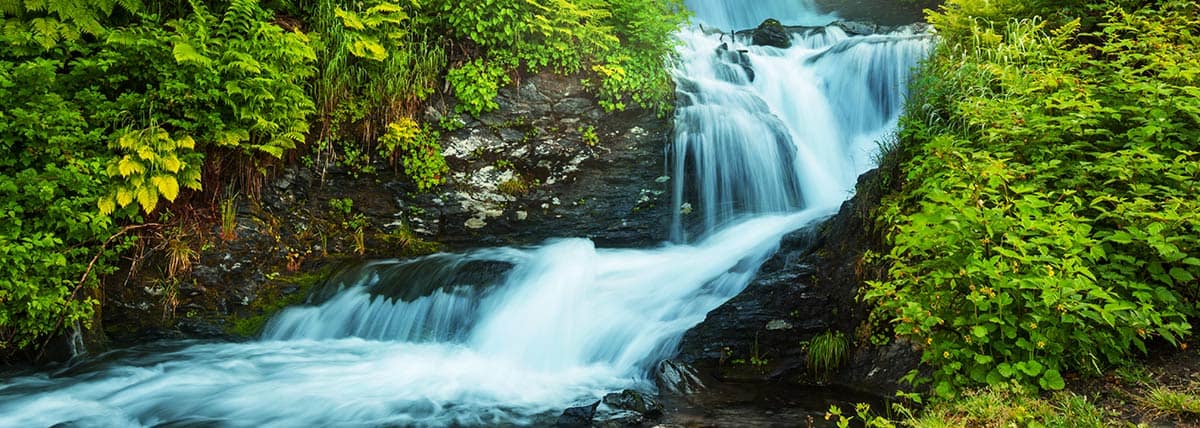
Glenn Aparicio Parry argues that dwindling supplies are increasingly being monopolised by big business.
Originally posted to Resurgence & Ecologist magazine
For millennia, water was thought of as a ‘commons’: it was something to be shared freely, not the property of any person or species. But water is now rapidly becoming privatised.
The more common bottled water becomes, the less likely water will be considered a commons. Already our dwindling supplies of clean, fresh water are decreasingly serving the local communities from which they spring, and increasingly being redirected to businesses that bottle it and sell it elsewhere. This business opportunity would not exist if we had not despoiled the water in the first place, of course, and I am ashamed to be part of the generation that let this happen.
As a teenager, I travelled, by car and on foot, in the High Pyrenees of Spain. I remember eagerly stopping at various places along the way to drink agua fresca. I vividly remember how amazingly pure the water tasted, and I wonder today how many of those springs are still fresh. Unless something changes, water will become the new oil. It already exceeds oil in price per gallon, and by a lot. Many people, including Vandana Shiva, have predicted that water will one day be as contended a resource as oil. Wars have already been fought over it.
It makes me profoundly sad to see water bottled. The nature of water is to flow, and economists, of all people, should understand this because the nature of the economy is the same; that is why the movement of money is called ‘cash flow’. The privatisation of water is symptomatic of an imbalanced and bottled-up marketplace, which is exactly what happened in late 2008, causing an international economic crisis. Why do we hold the invisible hand of the market as sacred and allow water to be bottled and sold?
Water is the principle in which life force, movement, is often expressed. Water is life! ¡Agua es la vida! This phrase, popular in many languages, needs to be heard, not as metaphor, but as truth. The mind that thinks water is not alive in itself will allow water to be despoiled; the mind that understands water as alive will not.
Many of the problems of modernity would disappear if we only believed that all the elements are alive in themselves, not mere constituents of life. Why? Because if we believe the elements are alive, we tend to respect them more – and we are more apt to build a meaningful relationship with them, as many Indigenous cultures have for millennia, and as Western cultures once did.
I predict that, one day, and probably within my lifetime, scientists will discover that everything in the cosmos is alive, just like they are today discovering that everything is interconnected. At present, scientists are continually confounded to discover life in places previously considered impossible, such as deep under the cold dark of Antarctic ice or in the boiling hot springs below Yellowstone Park. Life on Earth thrives in places as hot as Venus or as cold as Mars, yet we continue to waste time speculating about whether life exists on other planets. This is because we focus on the wrong things. Our separative consciousness divides the world into categories of living and dead, animate and inanimate, rather than seeing interpenetrating aspects of the same essence in varying states of organisation.
Research has shown that what we have deemed ‘nonliving’ acts as if it is part of a living, interconnected whole. David Bohm discovered this early in his career when examining plasma, and conceded, “It was as though the electrons were alive.” The Nobel Prize-winning chemist Ilya Romanovich Prigogine discovered that ‘inanimate’ chemical solutions of molecules appear to communicate with one another, acting in synchronisation to form coherent patterns. Prigogine confirmed these results even with random mixes of molecules; the molecules immediately began to self-organise. The logical conclusion is that Nature has an inherent capacity – we might even say drive – to self-organise.
The capacity of ‘nonliving’ systems to do things that we attribute only to living systems need not surprise us if only we are able to bring ourselves to a different conclusion – that all of existence is alive and aware and interconnected with us – just as Indigenous peoples have been saying all along.
Could it be that we were too quick to dismiss these beliefs as ‘primitive animism’? I would say so, and I am heartened by new forms of science now developing that essentially reprise animism under various new names: the Gaia hypothesis, organismic philosophy, systems thinking and holistic approaches, to name a few. At the very least, I do not see the benefit of continuing to divide life from death in the way we have up until now. It would be more radical to bring these aspects together in a way that collapses that dichotomy – that recognises that what we call life and death, new and old, are interpenetrating. All of existence is alive, deeply interrelated, self-aware, and self-organising.
Let me return to water to illustrate what I mean.
Leonardo da Vinci carefully examined the qualities of water and filled voluminous notebooks with observations. He found that, amongst other things,
[water] percolates through all porous bodies. Against its fury no human defence avails, or if it should avail it is not for long. In its rapid course it often serves as a support to things heavier than itself. It can lift itself up by movement or bound as far as it sinks down. It submerges with itself in headlong course things lighter than itself. The mastery of its course is sometimes on the surface, sometimes in the centre, sometimes at the bottom. One portion rises over the transverse course of another, and but for this the surfaces of the running waters would be without undulations. Every small obstacle whether on its bank or in its bed will be the cause of the falling away of the bank or bed opposite to it.
When water does all these things in a seemingly effortless way, is it merely a mechanical reaction to circumstances, or is it a form of intelligence that thinks and makes fluid decisions that embody an active balancing process? I would opt for the latter. I believe water is as alive and conscious as you or I. If this seems hard to accept, why is water considered alive when it is inside the human body – where it is renamed ‘blood’ – but outside the human body it is considered inert or dead? It would be absurd to say that water within us is not alive, because we are made up of 70% water. But what exactly is the difference between the water inside and the water outside the body? If there is none, why is only the water within us considered to be alive? The same could be said for air or any of the other elements. Why do we separate our inner body and outer world in this manner?
All the elements act in similar ways whether they are inside or outside the human body, which is, in part, why human beings are considered the microcosm of the macrocosm. This is something da Vinci also realised. In his notebooks, he wrote:
Man has been called by the ancients a lesser world, and indeed the term is rightly applied, seeing that if man is compounded of earth, water, air and fire, this body of the earth is the same; and as man has within himself bones as a stay and framework for the flesh, so the world has the rocks which are the supports of the earth; as man has within him a pool of blood wherein the lungs as he breathes expand and contract, so the body of the earth has its ocean, which also rises and falls every six hours with the breathing of the world; as from the said pool of blood proceed the veins which spread their branches through the human body, in just the same manner the ocean fills the body of the earth with an infinite number of veins of water.
I love poring through the notebooks of da Vinci, particularly when he speaks about water.
Water is life, water is us, and until we realise this we will never change our ways, the ways that are threatening to destroy us. For if we do not realise that water is life, and we continue to imagine that the water outside our bodies is somehow of lesser importance than the water inside our bodies, we will continue to disrespect the bodies of water on Earth, and we will continue to pollute the water, which only ends up harming ourselves because we are the water that we are polluting.
Water is our closest relative; we can no longer pretend to distance ourselves from her or to degrade her into a mere utilitarian resource – an abstract other. Water has the right to be; she has the right to exist in the way Nature intended, serving all of life. When we extract her energy for hydroelectric power or pollute her with our industrial wastes, we are pursuing our short-term cash flow at the expense of the life force on Earth for the longer term. We do not own the water, the land, the air, the fire. These are simply not ours to own, because they are the essence of all life, not just ours.
I would be particularly pleased if society directed its efforts to restoring watersheds and rivers above all else, because nothing else could be more important. Only 3% of the water on the planet is of the fresh water category and of that, less than three-tenths of 1% is free flowing (the rest being trapped in glaciers or polar ice caps) – and a great majority of that free-flowing water is polluted.
The restoration of a river can often be accomplished by simply removing dams. Damming rivers is damaging to everything: to the river, to the fish, to the trees and ecosystems around the river, and to human beings too. The nature of water is to flow.
This article was adapted from Original Thinking: A Radical ReVisioning of Time, Humanity, and Nature by Glenn Aparicio Parry, and is reprinted with the permission of North Atlantic Books © 2015.
